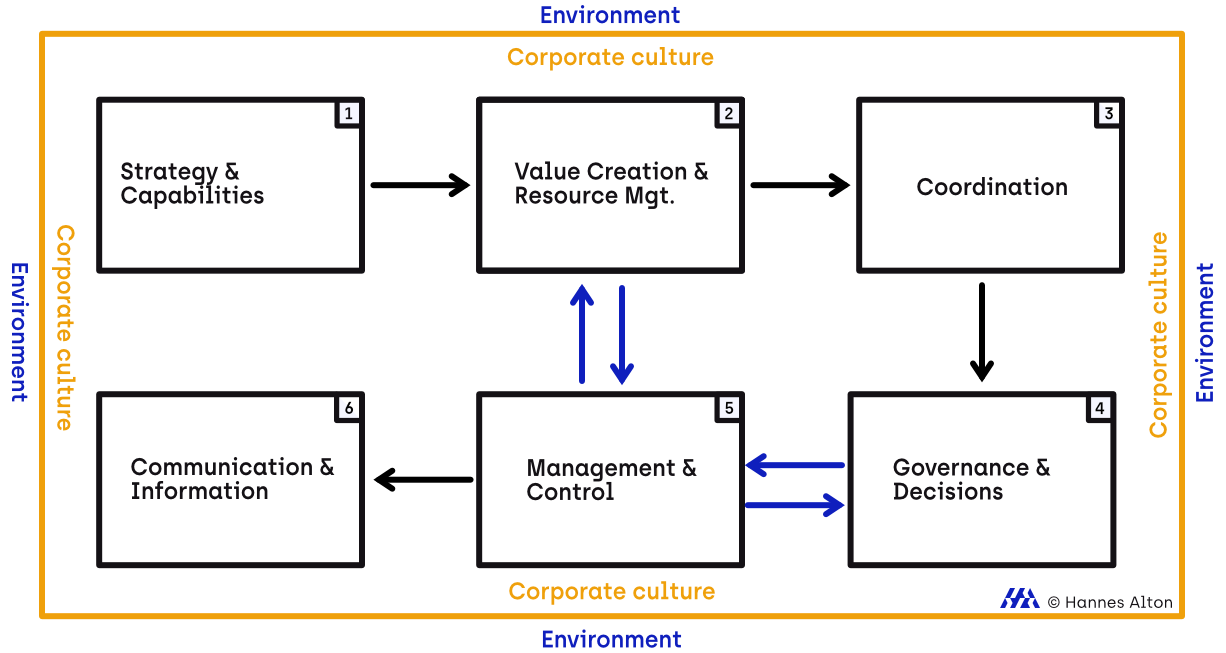VectorDelta & VectorBlueprint: From the field of tension to the architecture of
measures
Making decisions in change projects is difficult.
Particularly regarding WHERE change processes should begin.
- Interpretations of data and interview results vary.
- The objective of the change process is unclear.
This results in extended discussions, uncertainty, and lackluster compromises.
For this reason, I developed Vector³—a workshop format—consisting of three modules.
Based on the
seven subsystems of organizations, participants use VectorMap to develop a shared vision (goal) and analyze the initial situation (reality).

This article explains how VectorDelta is used to visualize tension fields and VectorBlueprint to design architectural measures.
It targets entrepreneurs, managing directors, executives, and HR professionals involved in change processes.
Working on parts vs. working on the overall system
Organizations are complex social systems made up of various interconnected subsystems that affect one another.
Complexity tempts people to view and analyze problems in isolation. This results in short-term isolated solutions that may work in the short term but affect the overall system in the medium and long term.
„If we have a system of improvement that is directed at improving the parts taken separately you can be absolutely sure that the performance of the whole will not be improved... The performance of a system depends on how the parts fit not on how they act taken separately.“ Russell L. Ackoff
Complex systems exhibit emergent properties that cannot be attributed to their individual components. This is why working on the overall system is so important.
It's not about finding the perfect solution, but about achieving the right balance among the subsystems on which Vector³ is based.
VectorDelta: Working with the field of tension
VectorDelta makes the field of tension between vision and reality visible.
Numbers, data, and facts are essential. So are the results of interviews. The challenge, however, is for everyone to develop a common understanding of the goal and the initial situation. This is especially true for managers. This result is achieved with VectorMap.
Working with the tension field begins with VectorDelta. In this module, participants deliberately examine the differences between their vision and the current situation.

This process makes challenges visible and tangible for participants in the Vector³ workshop. By creating awareness, it encourages individuals to step out of their comfort zones.
Working in teams creates shared experiences and promotes cross-departmental and cross-divisional communication.
A consistent overall picture emerges from multiple perspectives. A holistic view of the company emerges from a variety of individual observations, needs, and priorities.
Participants begin to uncover dependencies and connections that they had previously overlooked.
VectorDelta establishes a clear and transparent foundation on which:
- Measures can be derived,
- Synergies and dependencies can be identified, and
- Priorities can be defined.
VectorBlueprint:
Deriving measures
VectorDelta reveals areas of tension, which can then serve as a basis for deriving measures.
Participants set goals based on the identified delta. Dependencies and synergies are clarified to provide a meaningful context for the measures.
The stakeholders who are affected by the changes or who suffer from the current situation have already been identified in the VectorMap module. This makes it easier to identify who should be involved in the following steps, such as detailed elaboration and implementation.
Attentive readers will have noticed that the tasks described follow the
logic of Puzzle Transformation and are located in the master control loop.
Development of the measure architecture
One of the main tasks of the master control loop is to create the optimal conditions for work in the sub-control loops.
The master control loop has the task of bringing the identified measures into a meaningful context, from which the action architecture emerges.
I define measure architecture as:
- the totality of all planned measures in a change process,
- their structuring and coordination with each other (sequence, dependencies, priorities).
- and their embedding in the overall system of the organization (strategy, resources, culture).
Action plan = a list of tasks and deadlines
Action architecture = the systemic structure that ensures that actions work together
Success criteria ensure transparency as to whether actions are achieving the desired effect. This clarity and transparency are a fundamental success criterion for the teams responsible for the detailed elaboration and implementation of the actions.
This enables the teams in the sub-control loops to know:
- What results are expected,
- by when projects must be implemented,
- and how success is measured.
By working in control loops, the members of the master control loop can focus on strategic tasks, while those in the sub-control loops are entrusted with implementing the measures.
This is how co-creation and control work without losing control.
Clarity and focus instead of endless discussions
The goal of the Vector³ workshop format is to create clarity and focus, both of which are central aspects of successful change and transformation projects.
Instead of getting lost in details or getting caught up in debates about priorities, all participants develop a common understanding:
- WHAT is our goal?
- WHY is change necessary?
- WHAT do we want to change?
- WHERE should the change process begin?
- WHO is affected?
- WHAT risks are involved?
The clarity gained has a unifying effect because it makes expectations and responsibilities transparent.
Everyone knows what to do next and why it is crucial. Instead of isolated measures, the focus is on the overall system.
Initial uncertainty gives way to clarity and focus.
Conclusion and outlook
Vector³ is not a static analysis tool, but a format that relies on honest and open discussions.
Concerns, reservations, risks, and fears are addressed early in the process so that they do not become obstacles later on.
Vector³ fosters a common understanding of the organization and its change process from various perspectives, promoting a sense of unity and cooperation among all participants.
A common understanding of the organization and the change process emerges from a variety of perspectives.
With Puzzle Transformation, the operating system for change, running in the background, control loops can focus entirely on their assigned tasks without overburdening the system or employees.
One advantage of Vector³ is its self-contained format, making it ideal for off-site use and virtual workshops.
Would you like to learn more about Vector³? Then let's talk.
Curious to see what happens next? The following post will take a closer look at the
implementation of measures in the sub-control loops.




